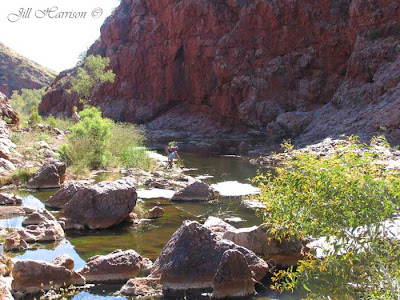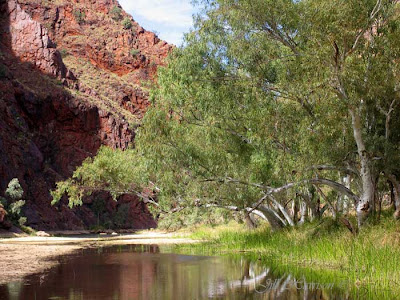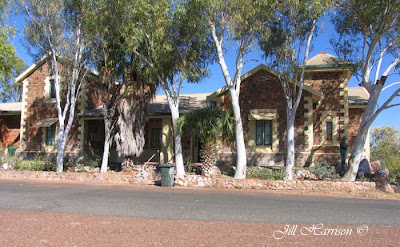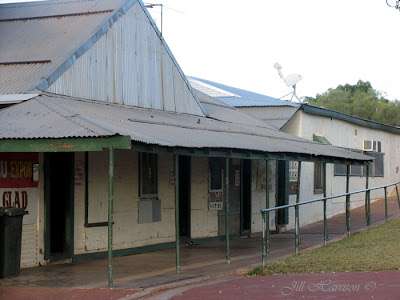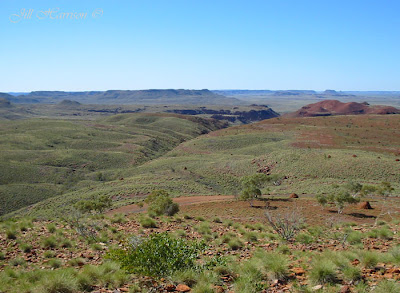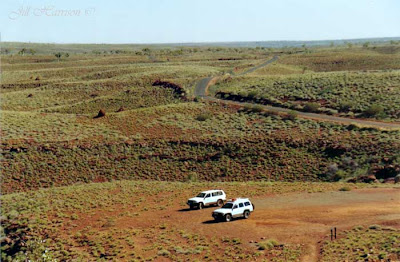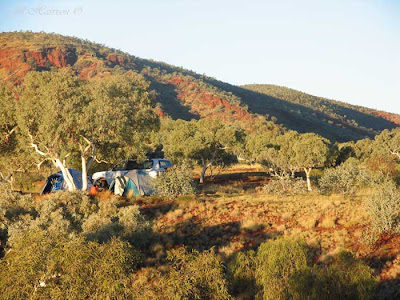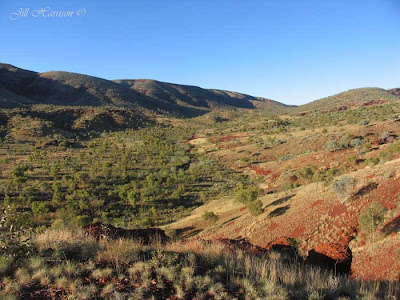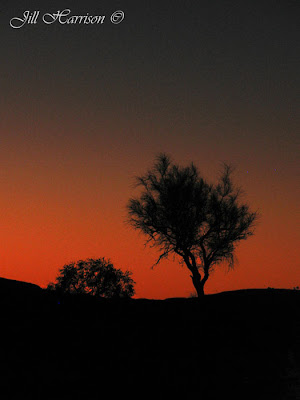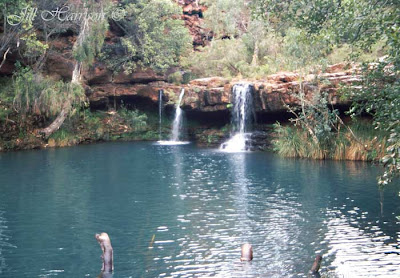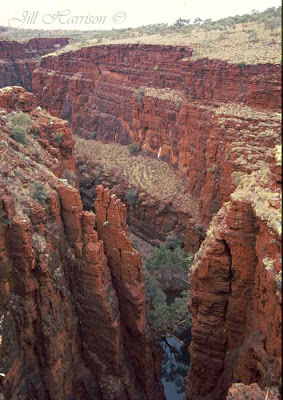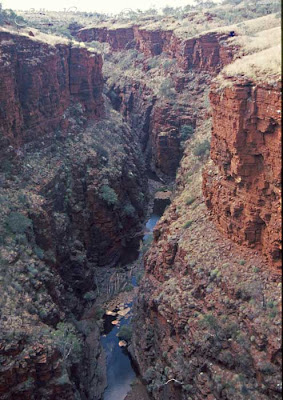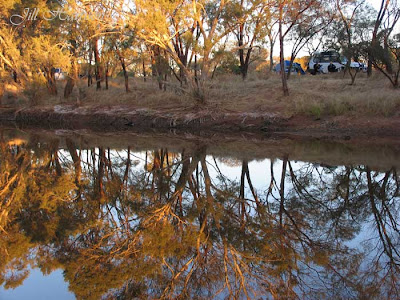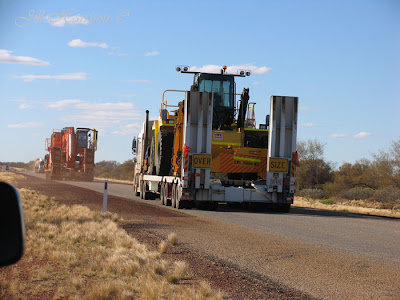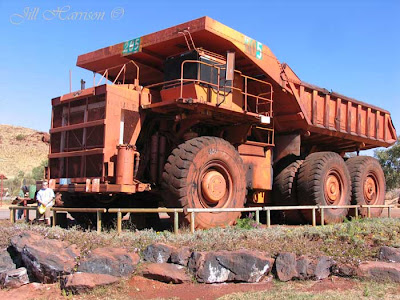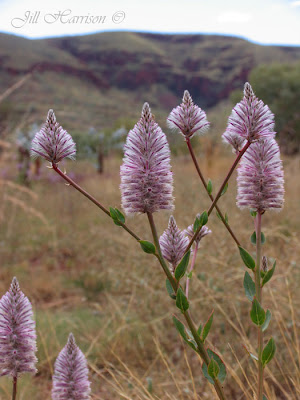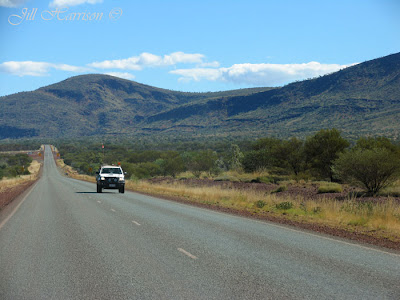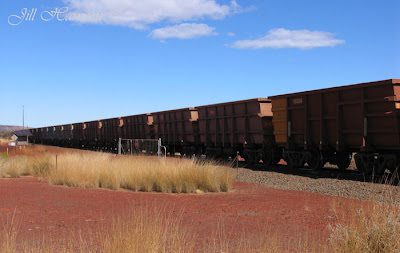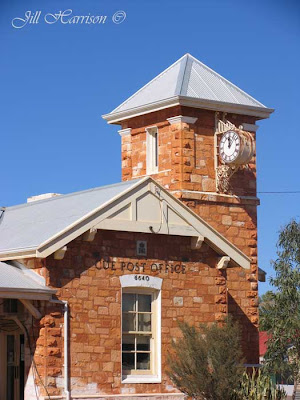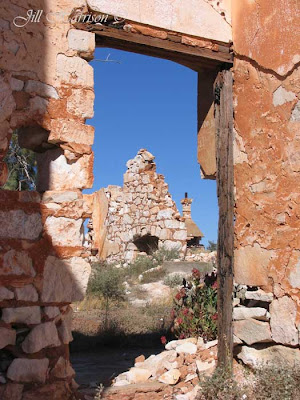Welcome to Week 28 of our 52 week tour Downunder Western Australia. This week we will be touring around magnificent and dramatic Karijini National Park in the Hamersley Ranges in Western Australia’s central Pilbara district.
The State’s second biggest national park, Karijini covers 627,445 hectares. Much of the southern half of the park is inaccessible, so visitors concentrate on the spectacular and rugged gorges in the north that plunge hundreds of metres from the Spinifex plains.
Karijini was first explored by FT Gregory’s party in 1861. The traditional owners, the Banyjima, Yinhawangka and Kurrama Aboriginal people, call the Hamersley Ranges, Karijini, so the park’s name recognises this historic link and their continuing involvement in park management.
Here we are driving through the park.
There are a number of gorges and walk trails to explore at Karijini. These range from short, easy walks for people of all ages and fitness levels, tracks for those with moderate fitness, to trails which should only be attempted by fit, experienced, well-equipped bushwalkers. It is a good idea to study the information boards before setting out, allow plenty of time, wear sturdy hiking boots and carry plenty of water.
The camp ground where we are going to set up camp is within walking distance of Dales Gorge. The walk trail into Dales Gorge takes you 800 metres down into Fortescue Falls and Fern Pool, and two kilometres through Dales Gorge to Circular Pool, before climbing the steep ascent out of the Gorge. Fortescue Falls is spring-fed and is the Park’s only permanent waterfall.
Here is Fortescue Falls from the rim of Dales Gorge....
The Falls tumble over layers of iron-stone rock from the tree lined Fern Pool. A wooden walkway takes you right to the waters edge and the pool is a perfect place to sit in the shade or have a swim to cool off.
This is Fern Pool.....
The trail following the creek from Fortescue Falls to Circular Pool is not difficult and visitors should allow a day to fully experience the Gorge. Built up over millions of years, the layers of multi-coloured rock of the cliff faces tower over clear rock pools and shady meandering pathways, which are a refreshing retreat from the arid Spinifex plains above you. There are plenty of places to sit and enjoy the beautiful landscape.
The pathway from Dales Gorge...
About 40kms west of Dales Gorge is the junction of Joffre, Hancock, Weano, Red, Wittenoom and Knox Gorges. Easily accessed lookouts give a spectacular view of what the forces of nature can do to the landscape. The Joffre Waterfall plunges hundreds of metres forming a natural amphitheatre.
Fit and more experienced walkers can follow trails down into and through the gorges. Walkers should be careful as trails may be unmarked, and go over steep, slippery and unstable surfaces. Flash floods can occur and it is not recommended to enter the gorges if there is rain in the area, and to leave as quickly as possible if it does rain. However you don't have to climb down into the gorges to enjoy them as the following views will show you.
This is one of my favourite shots from Karijini - however don't do as I did to get this shot...I climbed over the railing....much to my husbands distress - he was right of course - the railing is there for a reason. However it was the only way to get this angle and I am here to tell the tale. I love the fingers of red rock, and the blue water and the tree at the bottom.
This is Hancock Gorge.
And Knox Gorge.....
And the view from Oxer lookout....
And this is walking through Kalamina Gorge - one of the easier gorges to climb into and walk through. I must say photography in these gorges is problematic with the shade below and the bright light above. Next time I will try a graduated filter, but for these I have had to do a bit of pp to adjust lighting.
Karijini offers it all. Spectacular landscapes. Enough walk trails to satisfy the most avid hiker. Rock pools to cool off. Stunning sunrises and sunsets. Beautiful wildflowers. Unlimited photo opportunities. Peace and quiet. And at night a blanket of stars.
Well, the title said "red rock and spinifex". I have shown you the red rock, so here is the spinifex (well the seed heads anyway), taken in early morning light when we got up to see the sunrise over Dales Gorge.
Spinifex is very prickly to walk through - and feels like a tough plant, but really it is quite delicate because evidently if you stand on it the plant will die. Many small animals depend on the spinifex plant.
If you look at the previous photos the creamy coloured clumpy plants on the ground above the gorge are all spinifex. You can see some in the foreground of the photo of Fortescue Falls.
It really is amazing to stand in these places - I especially love sitting out at night under the blanket of stars gazing up at the Milky Way - so much clearer and brighter than in the city. And I love the quiet and the chance to just absorb what is around me - very rejuvenating - but so difficult to go home and return to work!


